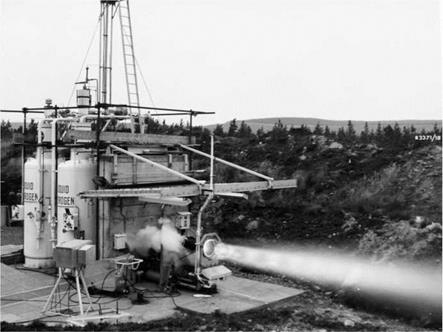I have seen the Minister of Aviation’s minute to you of 16th July about military space.
I note that he does not believe that we shall be able to hold back over military space indefinitely. I must make it clear that I should find the utmost difficulty in agreeing to add to our programme what might well become yet another major defence role or commitment. I suggest we cannot start to build a vertical empire if our colleagues insist on our continuing to provide for the defence of a horizontal one. I am sure that, before we go any further, we need a cool appraisal of what our real military space requirements are, if any, and of the various ways in which they might be met, with full figures of probable costs and an analysis of the effect of such costs on the already horrible Costings. I understand that papers on all this are being prepared for the Defence Research Policy Committee and I hope that these, in particular that of the Ministry of Aviation, can be considered very soon.
These are examples of the Zeitgeist, the feeling that space and rocketry are not Britain’s concern, and more than that: that the UK does not have the resources to become involved, and that British projects will inevitably be inferior to American projects.
The apogee of enthusiasm for space in the UK was probably in 1964. This is the year when Black Knight had reached a total of more than 20 successful launches, when there were two successful Blue Streak launches, and when Black Arrow was given its go-ahead, being announced publicly at the Society of British Aircraft Companies (SBAC) dinner just before the 1964 election by the Minister of Aviation, Julian Amery. There was a feeling of optimism that ELDO might lead to a bright new future for Europe and for Woomera. Newspaper and magazine articles portrayed Woomera as a space port for the future. Even earlier in the 1950s, the hit BBC radio serial, Journey into Space, portrayed the launching of Commonwealth rockets to the Moon and to Mars from the Australian outback.
The last of the major aerospace projects were all initiated under Macmillan’s Conservative Government. The Wilson Government in 1965 cancelled the TSR 2 and other major military aircraft projects. Concorde and Europa survived because of their international dimension: the UK was treaty-bound to these projects, the Foreign Office fought for them, the Government did not want to seem antiEuropean, and, most importantly of all, because the way the treaties were written, not a great deal of money would have been saved by cancellation.
The same was not true of Black Arrow, but by comparison with the likes of Concorde or TSR 2, it was a fairly insignificant affair. Spending was put on hold, to be doled out in three monthly offerings. Needless to say, this budgetary regime, the consequence of any lack of decision one way or the other, had the effect of both delaying the programme and increasing the cost, by preventing any long-term planning or ordering of materials.
Returning to the theme of the Zeitgeist, it is interesting to look at the press view. There had been successes with the launches of Blue Streak in 1964 and 1965, and with the Black Knight launches. But the Black Knight programme had finished by 1964, and the ELDO launches were hardly good news, despite the fact that the Blue Streak stage had always performed as expected. There was always the Black Arrow programme, but this was deliberately (and by Treasury instruction) kept very low key at the outset. The R2 launch in September 1970 was a different matter. The failure drew widespread attention in the press.
The broadsheets kept their reporting quite factual, and there had obviously been some ‘spin’ from the Ministry of Aviation and from Farnborough. Almost all the papers refer to the ‘seventeen seconds that cost success’, obviously a reference to the drop in pressurisation. The tabloids were less forgiving.
Under the heading ‘Broken Arrow,’ the Daily Mail had the following to say:
One Christmas, as a child, we got a train set called Golden Arrow which was gleaming, expensive, bursting with concealed power – and didn’t work.
So we can understand the chagrin of the boffins who get a space set called Black Arrow which was gleaming, expensive and… etc.
The first all-British launch of a satellite to orbit Earth failed to lob into a space an object uncomfortably like a pawnbroker’s ball.
Its purpose, we are solemnly assured, was to tell us things we didn’t know about the upper atmosphere. To this end, the Black Arrow project has been costing us £3 million a year.
As the Americans are some years ahead of us in this sort of exploration, it is likely that we could get all the information we could possibly digest about the upper atmosphere simply by calling Washington at the cost of £1 per minute.
If, however, we insist in going it – albeit late – alone, we would do well to mark the fact that NASA’s budget is around £1,300 million a year. And even they are looking for European money to launch a recoverable, and therefore cheaper, space outfit.
Our dilemma lies somewhere between the facts that even £3 million a year is too much to pay for a damp squib, while it would cost us many times that amount to buy a share of the American Roman candle. Especially as they would want to light the blue touchpaper.
The worst part about the article is the tone of mockery. The Evening Standard, a few months later, under the headline ‘WHAT A JOKE’ was even more brutal:
The French laugh at it. The rest of Europe ignores it.
The Russians couldn’t care less. Most Americans don’t even know it exists.
It is run on a budget that makes a shoestring look like a hawser. It depends on out of date equipment, and its future is in doubt.
What is IT? The Black Arrow project.
Britain’s national space effort – the one intended to gain us admittance to the exclusive – and so far elusive – Space Club.
But Black Arrow is a joke… a joke on the British tax payer.
The article continues in this vein, but there is a more interesting passage at the end:
The first one went haywire and had to be destroyed seconds after launch.
The second performed perfectly, and the third, launched last September, failed to put a satellite into orbit and in so doing failed to gain Britain entry into the ‘Space Club’ …
Yet, ironically, the previous failures can be laid at the door of funds, or the lack of funds.
This shortage of cash has led, in turn, to a shortage of time. For although there is only one firing a year, time is still of the essence.
Particularly when the scientists involved have to use slide-rules rather than computers.
When you have to make do with second best electronic monitoring devices.
And when you have to resort to economies like using garage petrol pumps for measuring your rocket fuel.
For the truth of the matter is that where America uses dollars, France uses francs, and Japan uses yen, Britain falls back on good old ingenuity.
But it is fast becoming apparent that Space projects can’t live on ingenuity alone.
Both articles are, in different ways, making the same point. There is no such thing as a cut price space programme.
So much for the public perception of the British space effort. What was the Government’s attitude? They were, after all, the customer.
With the advent of the Wilson Government in 1964, the Department of Economic Affairs (DEA) was set up as a counterbalance to the Treasury. One of its remits early in 1965 was to consider the UK space programme. To say that it was opposed to it in almost any form is no exaggeration. Thus one paper, when discussing the Small Satellite Launcher (Black Arrow) states: ‘There may possibly be a long term interest in TV transmission by satellite, but this is never likely to be economic.’ The first direct broadcast satellite was a Canadian satellite in 1972; nowadays, of course, Sky Television is ubiquitous. One of the problems with the Civil Service of the time, excellent though they may have been in many ways, is that they were not technically educated, nor had they any feeling for entrepreneurship. Even economists are seldom likely to spot the next future technology. This is re-inforced by a later paragraph in the paper:
… the fact remains that none of the applications of satellites at present even remotely in sight is likely to bring any economic return, either in terms of commercial profits to manufacturers, exploitation by HMG [Her Majesty’s Government] as operator, or, through international contracts, across the exchanges.
[This passage in the brief has been underlined and noted in the margin.]
One wonders how much consultation there had been with manufacturers, particularly those in the US. By 1964, two TELSTARs, two RELAYs, (medium orbit satellites) and two SYNCOMs (in geostationary orbit) had operated successfully in space. By the end of 1965, EARLY BIRD had provided 150 telephone ‘half-circuits’ and 80 hours of television service.
The paper then concluded: ‘This proposal [Black Arrow] should be resisted as strongly as possible. Either it should be killed right away or remitted back to lower-level …’
Another official in the same department as part of the same debate commented that competing with the US and USSR in space was ‘a wanton waste of resources’. With regard to ELDO,
… unless Europe is to go on indefinitely squandering more and more resources in a field without significant economic return, some country sometime has got to take the lead in calling a halt, even at the cost of seeming opposed to European co-operation.
Implicit in this statement was the notion that the UK should be that country. Then in 1965 came the first of the many disagreements in ELDO, followed later by the British reluctance to be further involved in the programme. It must have seemed odd to the remaining five members of the organisation to see the founder members, those who had pushed so hard for the organisation, to fall out in this fashion, and to lose enthusiasm for their own project.
A brief prepared for the Prime Minister, Harold Wilson, by the DEA on ELDO noted: ‘. the ELDO programme in general and our own proposed satellite launcher and satellite development programme are of low economic priority and cannot be justified on economic grounds.’ And on the ELDO B launcher proposal: ‘. For much less money we could do more work than we do now in a field which is of direct concern to us and where we can make new technological contributions’. But these fields never seem to be specified in any of the documents.
So what proportion of the space budget was taken up by ELDO? A policy paper written in 1966 estimated that Britain would spend £20.65 million on space that year, of which ELDO’s share would be £13.5 million, or more than 65%. Black Arrow, on the other hand, would come to around £1.7 million – or 8%!
Was the space budget exorbitant? Another paper of the period gives these figures for the estimated expenditure on civil Research and Development for 1966-19672:
|
£ millions
|
%
|
|
Space programme
|
18.8
|
6.4
|
|
Atomic Energy Authority
|
51.1
|
17.5
|
|
Research councils*
|
56.7
|
19.5
|
|
Universities
|
48.0
|
16.5
|
|
Ministry of Technology**
|
46.8
|
16.1
|
|
Other Government departments
|
23.1
|
7.9
|
|
Post Office*
|
5.9
|
2.0
|
|
*excluding space ** excluding atomic energy
|
Take ELDO out of the space programme, and its fraction of research and development expenditure shrinks to around 2%!
All the documents disparage ELDO A (Europa) on the grounds of ‘obsolescence’. This is a half-truth. What, in this context, does obsolete mean? The purpose of a satellite launcher is to launch satellites, and ELDO A would be a very good medium-sized launcher in the 1960s. Technically, the US was moving forward into solid fuel boosters and liquid hydrogen, but essentially, the technology has changed hardly at all in the half century from the advent of Atlas and Blue Streak. Launchers have grown bigger, but the latest designs would be quite comprehensible to the pioneers of the 1930s. The problem was rather different: there was little European demand for a medium-sized satellite launcher. Given in addition its increased cost compared with US launchers, then demand would indeed appear to be minimal (although it would have been as effective or more effective than the Delta rocket used to launch the UK Skynet satellites – had it been available on time).
ELDO B was written off by the same officials as still being smaller than some US launchers (Titan III). They commented: ‘Even the advanced ELDO B launcher cannot be expected to be technically or financially competitive with American launchers’. This again misses the point, which is whether it would have been capable of launching the geosynchronous satellites for which there would be a market, and a market that exists today and is growing ever greater.
It is interesting to read Tony Benn’s (Minister of Technology, 1966-1970) summation of ELDO, published in the New Scientist magazine in February 1971:
… The foundation of ELDO was, in fact, the first offloading by Britain of a high technology budget that its own industrial weakness no longer permitted it to carry. France identified it as a chance to build an alternative space programme to the American one, and de Gaulle dreamed of carrying the French language and culture to French Africa and possibly even to Quebec. Germany saw it as a first foot back into rocketry which helped to compensate for the loss of Werner von Braun, and Italy as a place for her in the big league plus contracts for Fiat. For European ministers of science it offered new ways to win a national reputation that would be popular with a public for whom the technological unity of Europe was slowly beginning to be real, even if only through the televising of the European cup and the Eurovision Song Contest.
And further: ‘ELDO… suffered from the fatal defect of being a hardware system in search of an application which was in any way economic.’
The counter argument was put forward by the Ministry of Aviation that unless the UK or Europe had its own capability, the US would have had a monopoly. Without Ariane, and without the availability of Russian launchers from the early 1990s, that would have been true. It is also probable that despite the wishful thinking of civil servants, the US would have charged a very great deal for launching satellites that would have competed with its own in the lucrative communications market. Indeed, it could have charged almost what it wanted to, or alternatively have retained its monopoly in the communications satellite area.
Lest it should seem that all the preceding quotes have been taken out of context, or that the quotes have been carefully selected to provide a one-sided argument, it is well nigh impossible to find any quotes in favour of pushing forward any space programme outside the Ministry of Aviation and the Foreign Office – and indeed after around 1966 even the Ministry of Aviation, or Technology as it had become, accepted the demise of the British effort. The Foreign Office was not concerned with the technology at all – merely the political implications of withdrawal from present programmes with regard to Europe and Australia.
Be all that as it may, British withdrawal, painful though it was, took place. The British experience with ELDO bit deep: so much so that the UK has never again become involved with any launcher programme. Even the European Space Agency, ESA, was described by one minister in the 1980s, Kenneth Clark, as ‘an exclusive club designed principally to put a Frenchman into space’. Such wilful disparaging of one of the most commercially and scientifically successful space agencies is astonishing. The same minister also refused to fund the innovative British Hotol design, whilst at the same time declaring the engine design classified, and thus preventing development elsewhere.
Could commercial firms have carried on some of these projects? The companies involved in aerospace in 1971 were Hawker Siddeley Dynamics, successor to de Havilland, which itself had been swallowed up in British Aerospace, Rolls Royce and Saunders Roe, who by then were part of Westland (at this period they were working under the name of the British Hovercraft Corporation. Like too many of the Saunders Roe programmes, hovercraft seemed initially to have had a bright future but have turned out to be a dead end).
Saunders Roe, even as part of a larger organisation, were too small to be able to afford the capital investment needed for developing satellite launchers. Rolls Royce and British Aerospace could have worked together on further developments of Blue Streak, but this was only part of the problem.
As well as the rocket, launch sites are needed. Woomera was not suited to satellite launching, and, by this time, was near closure. Kourou, in French Guiana, did, however, have a Blue Streak launch pad. Ariane 1 was not launched until 1979; Ariane 4, which has been the mainstay of ArianeSpace, not until 1988. How prepared the French would have been to make the launch site available is, however, another question. In addition, NASA in its post-Apollo phase, was promoting the Shuttle very forcefully as the answer to satellite launching, with the re-usable nature of the craft. Indeed, it is arguable that part of the success of Ariane was the Challenger disaster of 1987, since by then NASA had almost halted its programme of satellites on conventional launchers.
However, Ariane was a more powerful launcher than all but the most sophisticated Blue Streak derivatives. Ariane 1 was optimised to put 1,750 kg into a Geo Transfer Orbit (GTO). A Blue Streak/Black Arrow combination, even supplemented with strap-on boosters or liquid hydrogen stages, would not have matched that performance. Ariane 4 and Ariane 5 are even more powerful.
But even if the three firms had joined forces to produce a launcher, who would have been their customers? The UK Government has launched some military communications satellites under the Skynet programme, but not on a scale large enough to justify such investment. The European Space Research Organisation (ESRO), ELDO’s sister organisation, and other European countries might have been customers, but the market in 1971 was still very thin.
There is also a further political dimension: the UK aircraft industry was not in good shape in the 1970s; indeed, it was nationalised by the Wilson Government
during that period. It was certainly in no position to undertake large speculative projects of this sort.











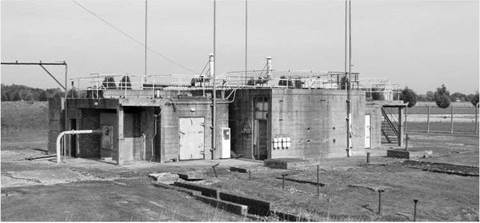
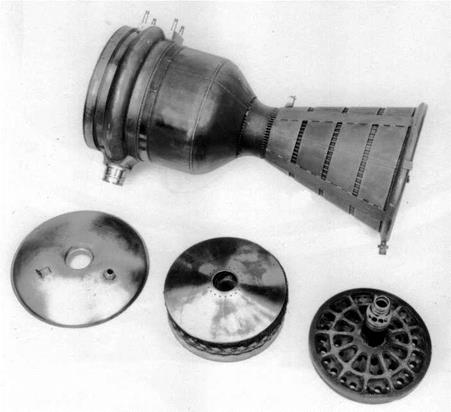
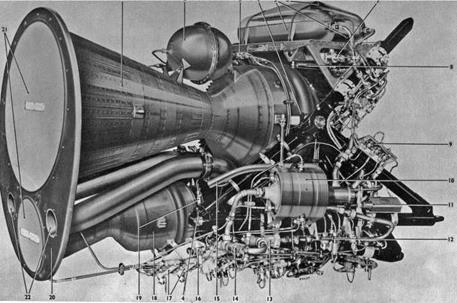
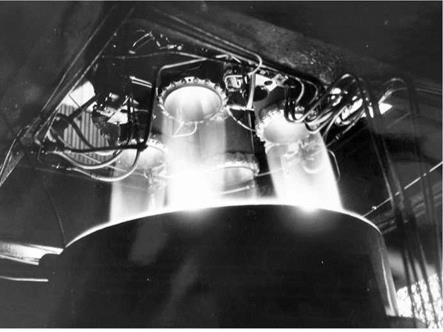
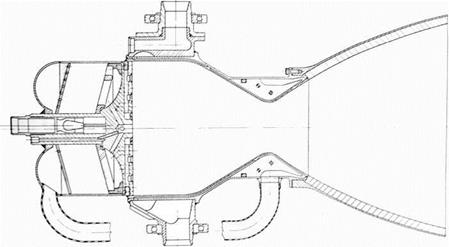
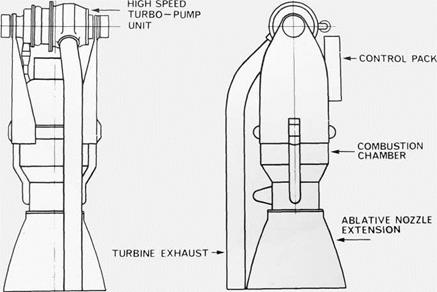
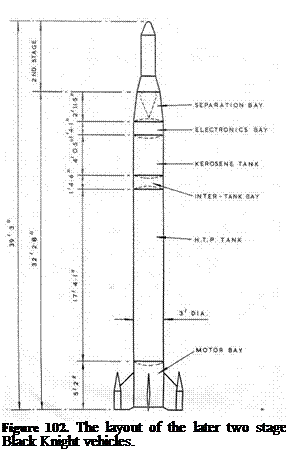 There was a misalignment of the radar beam (about 0.8°) tracking the vehicle which sent the vehicle further downrange than expected, but the second stage velocity increment was fortunately at 10° to the vertical, and uprange, which helped compensate for the error.
There was a misalignment of the radar beam (about 0.8°) tracking the vehicle which sent the vehicle further downrange than expected, but the second stage velocity increment was fortunately at 10° to the vertical, and uprange, which helped compensate for the error.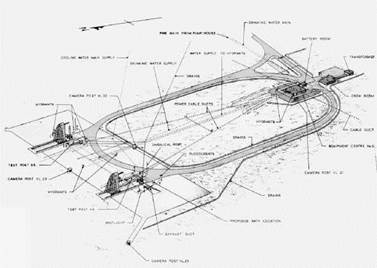

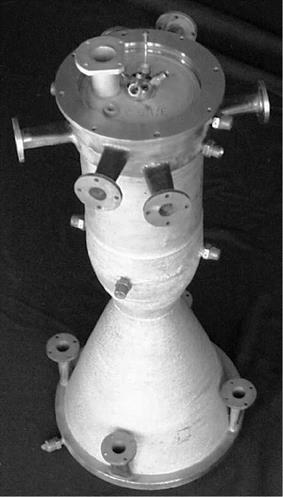 during launch. Although effective insulation is
during launch. Although effective insulation is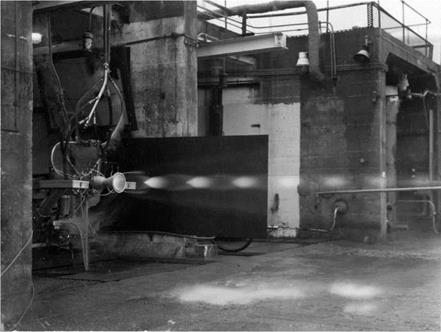


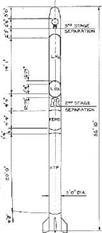

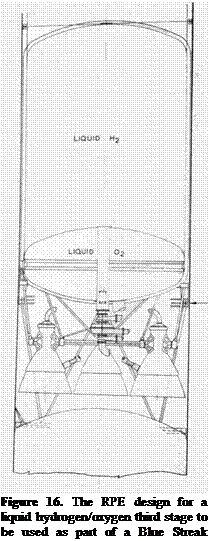 was the value being considered. This is quite an elegant solution, dispensing with the weight and complexity of a turbopump, yet avoiding the weight penalties of thicker tank walls and heavy gas bottles. The only drawback is that with the relatively low thrust, the burn time will be quite prolonged, which means carrying the unburned fuel up the Earth’s gravitational potential well as the vehicle gains in height.
was the value being considered. This is quite an elegant solution, dispensing with the weight and complexity of a turbopump, yet avoiding the weight penalties of thicker tank walls and heavy gas bottles. The only drawback is that with the relatively low thrust, the burn time will be quite prolonged, which means carrying the unburned fuel up the Earth’s gravitational potential well as the vehicle gains in height. To power such low thrust chambers with a pump was impractical. Pressurising the tanks usually meant carrying large and heavy gas bottles. Instead, the proposal was to use a heat exchanger to produce ‘hot’ (relative in this context) hydrogen gas. The gas could then be used to pressurise the tanks (a further heat exchanger would be needed for the liquid oxygen tank).
To power such low thrust chambers with a pump was impractical. Pressurising the tanks usually meant carrying large and heavy gas bottles. Instead, the proposal was to use a heat exchanger to produce ‘hot’ (relative in this context) hydrogen gas. The gas could then be used to pressurise the tanks (a further heat exchanger would be needed for the liquid oxygen tank).
 lb approximately
lb approximately
